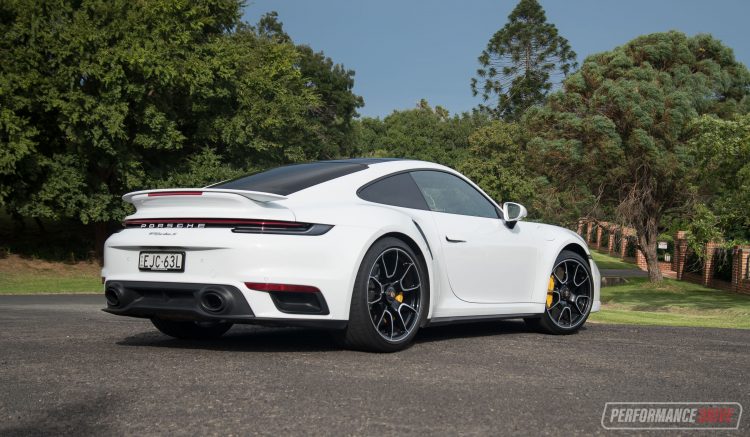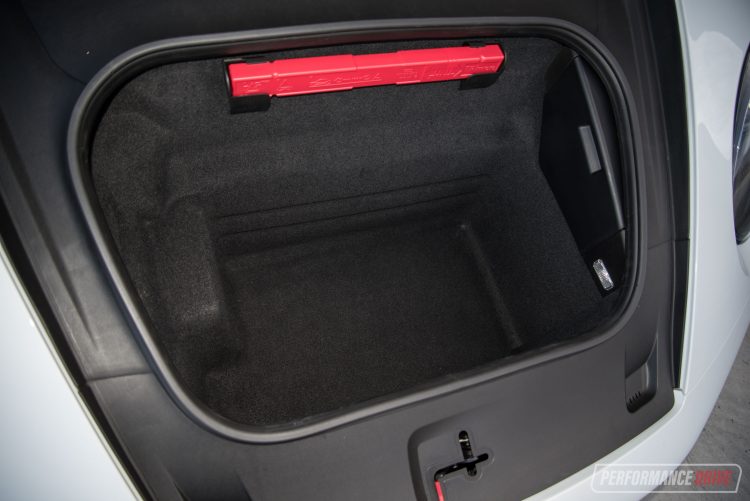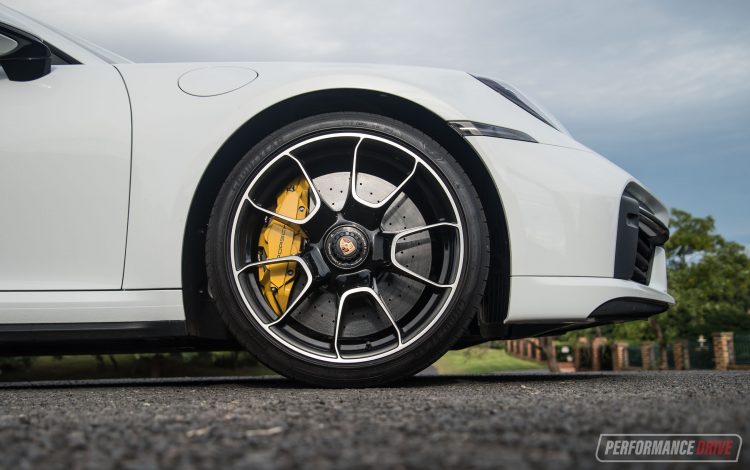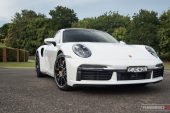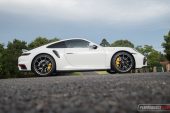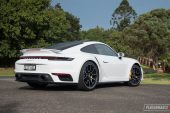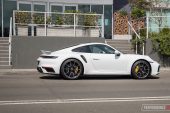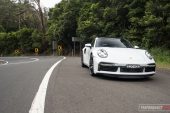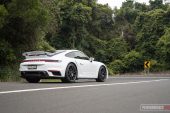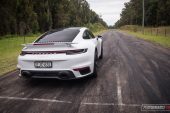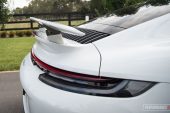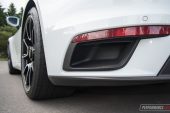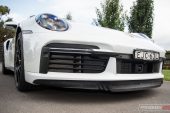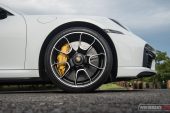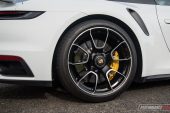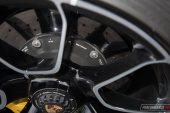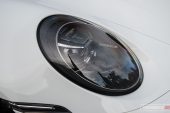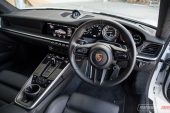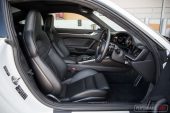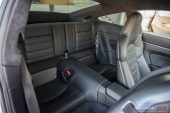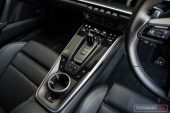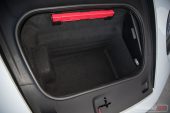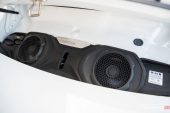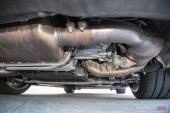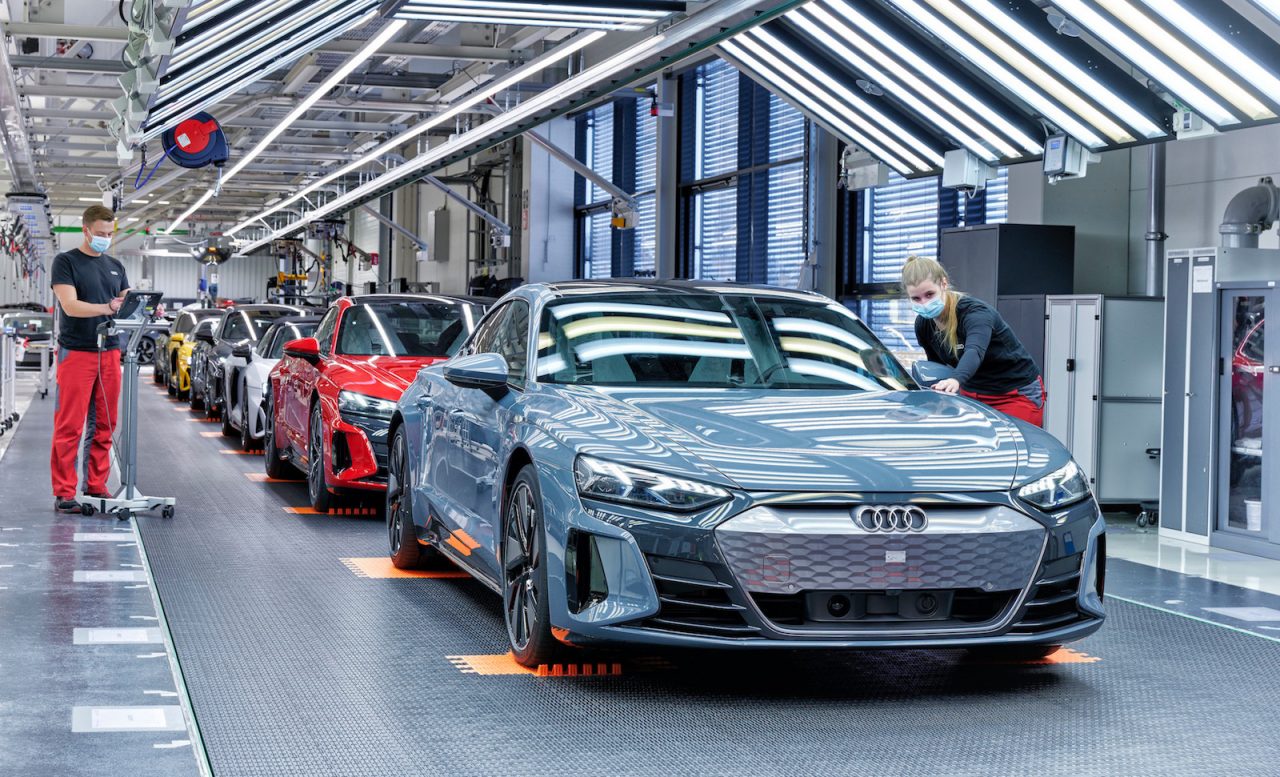Welcome to the quickest vehicle we’ve ever tested. Yes, the almighty 2021 Porsche 911 Turbo S. It’s part of a nameplate lineage that is often regarded as the pinnacle of all sports cars, which set a new benchmark with each new generation that arrives. You could even call the latest version a supercar given its staggering performance credentials.
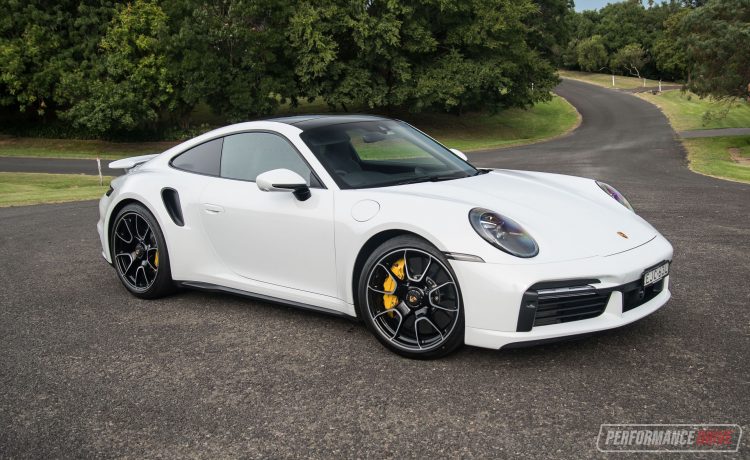
Now in its seventh generation, the 992 series Turbo S is the most powerful, most dynamically capable, and the most comfortable iteration yet. It also boasts some of the most advanced aerodynamics currently seen in the new car market, while the interior showcases more technology and connectivity than ever before.
The regular 911 Turbo kicks off the range, available in coupe and cabriolet form, with the Turbo S sitting at the top of the non-GT lineup for the 911 range. Both versions feature a new 3.8-litre (actually 3745cc) twin-turbo flat-six engine, based on the 3.0-litre flat-six seen in the regular Carrera and Carrera S models. For the S you have a whopping 478kW and 800Nm at your disposal. And all of this is channelled through a clever all-wheel drive system via a new eight-speed dual-clutch auto.
Prices for the regular 911 Turbo coupe start from $396,500, with the Turbo S coupe kicking off from $473,500. The cabrio is an additional $21,000 in both cases (excluding on-road costs).
2021 Porsche 911 Turbo S – THE SPECS
[column width=”47%” padding=”6%”]Engine: 3.8-litre twin-turbo flat-six
Output: 478kW@6750rpm / 800Nm@2500-4000rpm
Transmission: Eight-speed dual-clutch auto
Drive type: All-wheel drive
Wheels: F: 20×9.0, 255/35 R: 21×11.5, 315/30
ANCAP: Not tested
Tare weight: 1599kg
Power-to-weight: 3.34:1 (kg:kW)
Official fuel economy: 11.5L/100km
Economy during test: 12.1L/100km
Fuel capacity/Type: 67L/98 RON[/column] [column width=”47%” padding=”0″]Power efficiency: 41.56kW:L/100km
0-60km/h: 1.52 seconds*
0-100km/h: 2.76 seconds*
0-200km/h: 8.56 seconds*
60-110km/h: 1.63 seconds*
1/4 mile: 10.46 seconds at 210.5km/h*
Max acceleration: 1.351g
100-0km/h braking: 2.69 seconds at 34.13 metres*
Max deceleration: -1.400g
Decibel at idle (/Sport mode): 55/62*
Peak decibel at 60-100km/h: 89/92*
Priced from: $473,500[/column][end_columns]
* Figures as tested by PerformanceDrive on the day. Factory claims may be different
2021 Porsche 911 Turbo S – THE PACKAGE
Despite looking quite modest, in traditional 911 form, the new Turbo S is one of the most aerodynamically advanced vehicles currently on sale. In fact, according to Porsche’s head of aerodynamics, Dr Thomas Wiegand, “No other sports car reacts to different situations with such aerodynamic flexibility as the new 911 Turbo S.”
The front and rear spoilers extend and retract depending on the driving mode as well as various other conditions, and there are active cooling flaps in the front end that open and close depending on the demands.
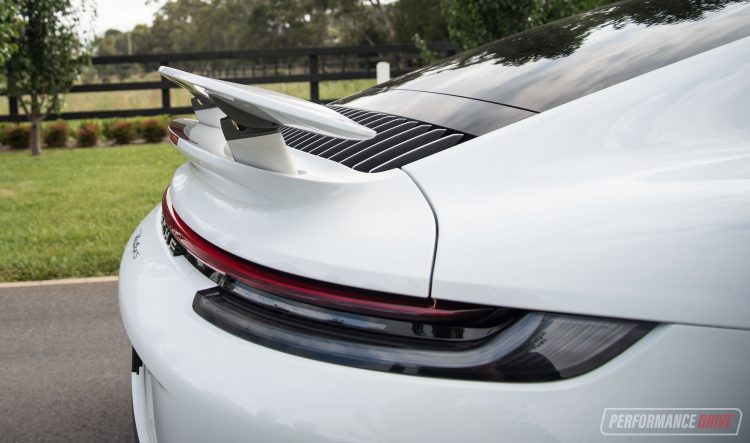
Not only that, the front and rear spoilers also provide active air-braking functionality and automatically deploy during high-speed braking to shorten the stopping distance and improve driving stability. There’s also a special wet driving mode that utilises the aerodynamic parameters, and even the position of the sunroof impacts the positioning of the adaptive aero strategy.
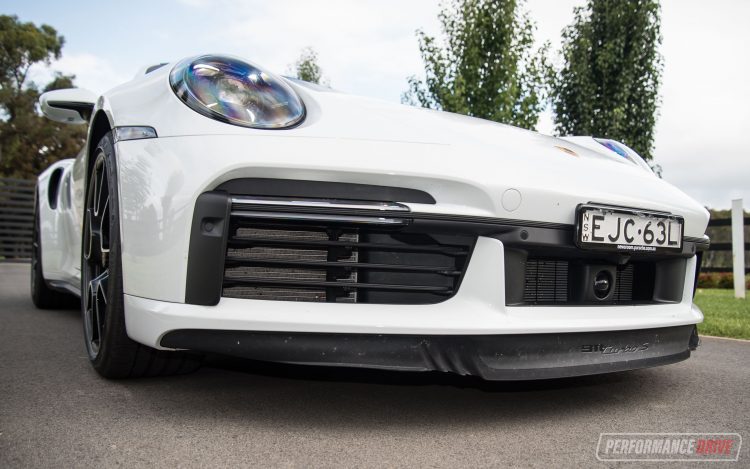
Using the drive mode toggle prompts certain things to happen in any case. For example, the Sport Plus mode extends the spoilers to their full reach, and the angle of the rear wing moves to its most aggressive spot. Setting to Sport mode levels out the rear wing to optimise airflow, if you’re planning on hitting very high speeds, for example – as we did at Sydney airport about six months ago.
The underbody is almost completely flat with only special veins and guidance shrouds interrupting the level contour. It’s only at the very back do you see some of the engine and turbocharger housings discreetly tucked away without covering, no doubt to aid cooling. When you take a moment to absorb and appreciate the incredible level of detail, you soon realise this car is built for speed, whether the road is straight, bendy, or wet.
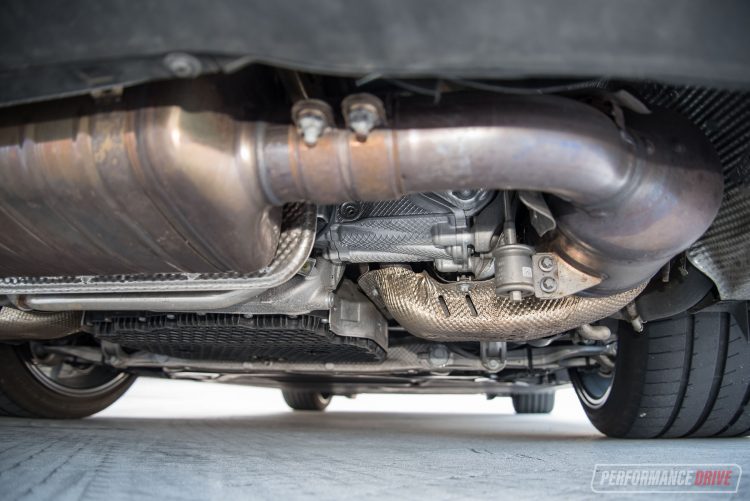
Porsche says the maximum downforce generated in the most aggressive aero position (Sport Plus mode) is around 170kg, or about 15 per cent more than what the predecessor could achieve. In the sleekest settings, the car also presents a drag-coefficient value of 0.33, which is quite slippery for such a serious sports car.
As is the case with every generation of 911 Turbo, the 992 series flagship is larger than before. This helps to improve comfort and refinement inside, and practicality. After all, the 911 is sometimes nicknamed the ‘everyday supercar’. The body is also wider, by 45mm at the front and 20mm at the back, providing that iconic wide-body shape.
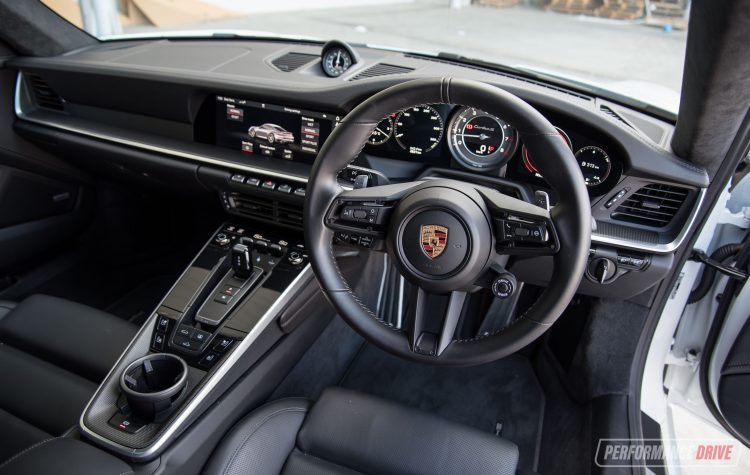
Inside, it’s a typical 911 cabin. Minimalist, driver focused, and with a big fat rev counter sitting front and centre for the driver. The 992 series is quite modern though, featuring a crisp 10.9-inch touch-screen media interface offering various apps and configurable widgets, while two configurable 7.0-inch digital screens surround the mechanical rev dial for the driver.
Seating comfort is good in the front, with a perfect driving position and a good level of adjustability. The steering wheel falls right at your chest, and the close windscreen and flat and straight dash ensure optimum visibility. Rear seat space is very tight, but it is suitable for kids. There’s also some handy storage space behind the rear seats, measuring 128L, but it can be a stretch to access.
With the engine mounted behind the rear axle, it means most of the cargo space is found under the bonnet. It’s a decent volume, at 264L, especially for such a high calibre vehicle – and more so if you categorise it as a supercar. There is some space to store smaller things around the centre console inside, while the door pockets are only just big enough to stash a phone.
2021 Porsche 911 Turbo S – THE DRIVE
This engine has to be one of the most evolved engine configurations on the planet. Porsche has been using the same twin-turbo flat-six formula for decades now. And why not. It definitely works. In the new Turbo S the unit generates 478kW at 6750rpm, and a bulldozer-like 800Nm between 2500-4000rpm. There is no other combustion engine on the new car market that produces this much power with a capacity of 3745cc or less. Much of this is thanks to twin variable geometry turbochargers, two intercoolers, piezo injectors, VariaCam Plus variable valve timing and lift, and a compression ratio of 8.7:1.
Behind the wheel, the power output is unbelievable, but it’s the torque that really pushes you hard into your seat. According to our Vbox results this car generates up to 1.4G in acceleration. It can honestly upset your internal organs, it’s that severe. Speaking of Vbox results, we saw a best 0-100km/h of just 2.76 seconds, 0-200km/h in 8.56 seconds, and the quarter mile in 10.46 seconds at 210.5km/h. Even the 0-60km/h time of 1.52 seconds is just stupendous.

Our real-world 0-100km/h time is pretty much exactly what Porsche claims, at 2.7, but our 0-200km/h time is actually an improvement on Porsche’s claim of 8.9 (officially 1.0 second quicker than the predecessor). In short, these are the quickest times we’ve ever seen from a factory vehicle, in all 10 years we’ve been testing vehicles.
The idea of a factory standard ’10-second car’ seemed impossible not that many years ago. And this doesn’t just scrape in. It easily dips into the 10s. And we aren’t testing on a specially-prepared drag strip – we use an old private road. On the day we tested the temperature was around 25C, so on a proper strip in sub-20C temperatures we think you could see it getting extremely close to the 9s. Yep, insane.
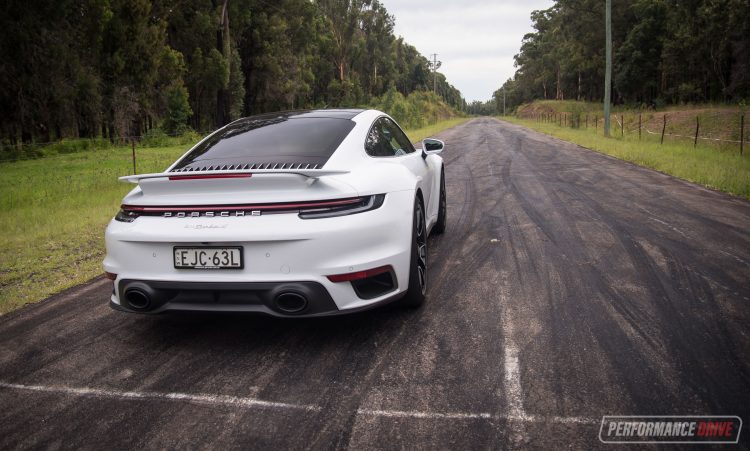
You’d probably expect a lot of turbo-lag with that much power and torque and a fairly low compression ratio, but honestly this is one of the most responsive sports cars we’ve driven. Poke the throttle in auto mode, in D, and the dual-clutch transmission shifts down almost as quick as you depress the accelerator. And you’re off. Instantly. Don’t believe us? Check out our 0-100km/h video below and watch, in particular, the in-car shot at the 5.33 mark that shows the 60-110km/h kick-down. You can hear the moment the throttle pedal hits the floor – check out the response from the tacho. We’ll wait.
Crazy, right? It’s like it knows you’re about to press the accelerator before you’ve even pressed it. There is a very minor moment of turbo-lag, but we’re talking so minute that it really doesn’t impact the rate of progression at all. You can just see it in the video, at around 4000rpm, and it might even be the moment the VarioCam system kicks in. We get the sense this engine would provide strong power and response even without the turbochargers anyway, so the boost is just a massive wave of thrust.
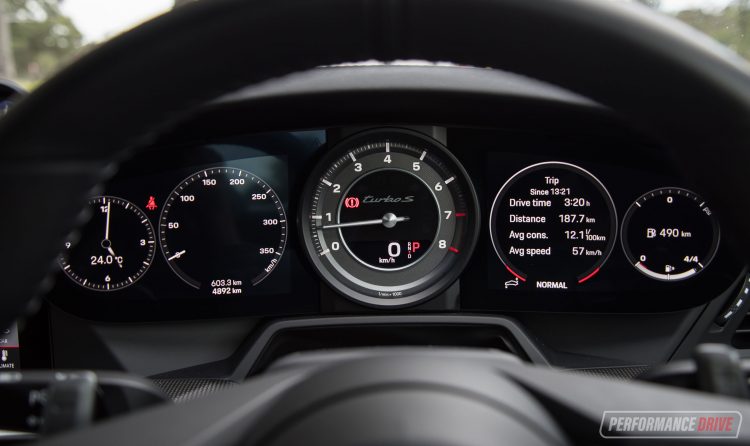
As impressive as the performance is, this is also one of the most power-efficient combustion engines we’ve come across, with an official consumption average of 11.5L/100km (under the new WLTP cycle), and our week of testing (640km) returning a figure of just 12.1L/100km. The official rate translates to a power-to-consumption ratio of 41.56kW:L/100km. Just to reel off a few high-power heroes, the 522kW Jeep Grand Cherokee Trackhawk calculates at 31.07kW:L/100km, the 470kW Lamborghini Huracan EVO rates at 33.81kW:L/100km, and the 585kW Ferrari 812 GTS rates at 39kW:L/100km.
Put it this way, there is no other production car on the market today or ever in history that uses a sub-3800cc combustion engine to produce over 470kW while offering an official fuel consumption of 11.5L/100km or less. Just think about that for a second. Even if you simply half the figures, it is still out of this world. For example, it’s like a 239kW 1.9L engine having an official consumption of 5.75L/100km.
An Audi A3 40 TFSI hatchback, which is a very economical little car, produces 140kW and is rated at 5.9L/100km, with a 2.0L engine. Imagine taking that to a tuner and asking them to pull an extra 100kW. And then saying, ‘oh, by the way, it needs to use less fuel than it already did.’ It’s totally mind-bending, and it proves that while electrification might be the future, the evolution of the combustion engine is continuing. Mankind still has tricks left up its sleeve.
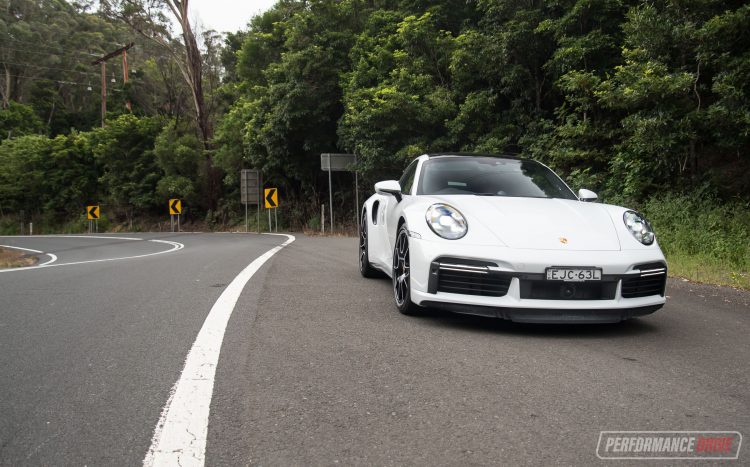
So now, for a second, imagine having all of that acceleration available in a package that also handles like a dream. With all-wheel drive and one the best steering systems on the market, this car’s ability to storm up or down a mountain pass is just ridiculous. Like, seriously, ri-dic-u-lous. You arrive at the end thinking, ‘really, did I just complete that run already?’
What I personally love about the handling though is that it is not completely rigid and monotone. You can provoke understeer and oversteer, get some body movement happening, and have the rear end squirming under power. It’s almost like a combination of the best hot hatch you’ve ever driven, with exciting front end tug, along with the ability to manipulate the rear end like your favourite rear-drive sedan.
And this is all if you want it to behave like that. Put it in Sport Plus mode and take a conventional driving line, and it is quite foolproof as well. You just have to be mindful of that acceleration as you can’t just nail the go-pedal whenever you please. You need space, as the available space quickly diminishes.
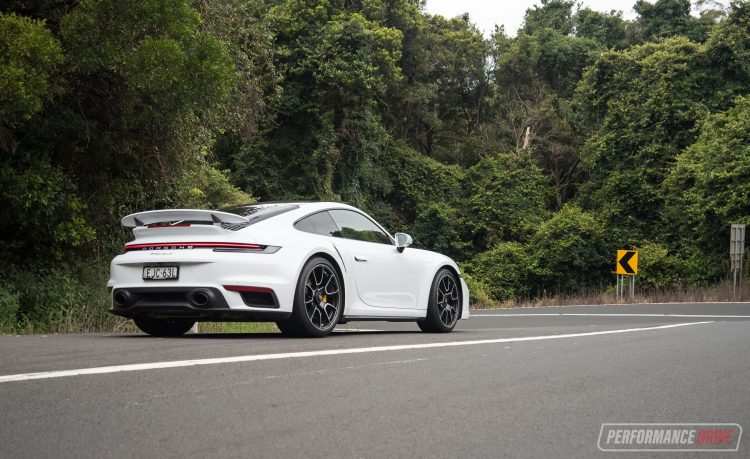
The 911 Turbo S is one of the heaviest of the 911 range, with this new model weighing 1599kg (tare). That’s up only 40kg more than the equivalent predecessor, with the old seven-speed dual-clutch transmission. The fact that this has one more gear, slightly larger body dimensions, and uses 20-inch front and 21-inch rear wheels (a first with staggered sizes), these would probably be enough to add up to 40kg. It really doesn’t matter anyway as the powertrain and enhanced driving dynamics more than make up for any deficiencies caused by that 40kg.
Of course, being a Porsche, the brakes are insane as well. After all, Ferdinand Porsche once said a car should never go faster than it can stop. And that’s exactly the case according to our tests. We clocked 0-100km/h in 2.76 seconds, as mentioned, and 100-0km/h in 2.69 seconds. The S comes standard with Porsche Ceramic Composite discs by Brembo (albeit made in Germany), with whopping 10-piston calipers on the front. It can pull up to a dead stop with utter control and confidence, no matter what speed you’re doing.
2021 Porsche 911 Turbo S – THE VIDEO
2021 Porsche 911 Turbo S – THE VERDICT
The powertrain is truly remarkable. It’s hard to fathom how a road-legal car can be this quick and powerful, yet also so well-behaved and useable in normal conditions. No wonder it’s known as the everyday supercar. We just love everything about it; the intelligent active aero, the eye-popping brakes, the gut-hurting acceleration, the malleable handling, and the cool and calm design inside and out.
We all have dreams of what an ideal car entails, but this is clearly the result of many dreams of many great minds over decades of technology and development, accumulating to something that will, undoubtedly, exceed all of your expectations. In our opinion, that’s what the evolution of the 911 is all about.
[column width=”47%” padding=”6%”]PROS:
– Unprecedented levels of acceleration and usable power for a road-legal car
– Completely adaptable driving dynamics; all weather, variety of driver skill levels
– Very clever active aerodynamics
– Surprisingly fuel efficient for a ’10-second car’
[/column] [column width=”47%” padding=”0″]CONS:
– Pricey options[/column][end_columns]
As always, if you’re thinking about buying a new car don’t forget to click here to speak with our car buying specialists.
